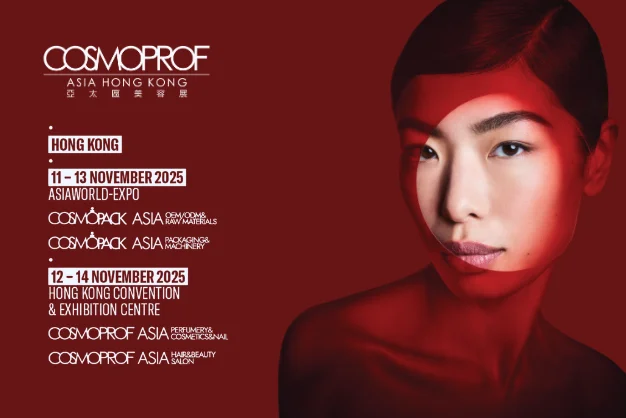TABLE OF CONTENTS
TABLE OF CONTENTS
Introduction
When comparing Phenyl Trimethicone vs Dimethicone, many people assume they serve the same purpose in skincare and haircare products. While both belong to the larger family of silicones, their unique properties make them perform very differently in cosmetic formulations. In this complete guide, we’ll break down the 7 essential differences between Phenyl Trimethicone vs Dimethicone so you can confidently choose the right ingredient for your personal care products or formulations.
Phenyl Trimethicone vs Dimethicone: 7 Crucial Functional Contrasts
1. Chemical Composition: How Structure Drives Performance
Phenyl Trimethicone
This silicone incorporates phenyl groups along its siloxane chain, which drastically alters its performance. The presence of phenyl groups gives it improved light reflection, lighter texture, and faster evaporation, making it highly desirable for products that require a weightless feel and aesthetic appeal.
Dimethicone
On the other hand, Dimethicone features a simple linear siloxane backbone. Its heavier molecular structure allows it to sit longer on the skin or hair, creating a protective, long-lasting, and highly moisturizing layer.
When choosing Phenyl Trimethicone vs Dimethicone, formulators often prioritize the chemical structure based on the product’s end goal.
2. Shine & Light Reflection
Phenyl Trimethicone
One of its most attractive benefits is its superior shine-enhancing ability. Its phenyl groups boost light reflection, making it perfect for high-gloss hair serums, shine sprays, and glow-enhancing facial products.
Dimethicone
While Dimethicone also adds some shine, its primary strength lies in surface smoothing and frizz control. The shine produced is more subtle compared to Phenyl Trimethicone vs Dimethicone, but both deliver visible results depending on usage.
Consumers often evaluate Phenyl Trimethicone vs Dimethicone when choosing shine-enhancing products, especially for haircare.
3. Lightweight Feel & Volatility
Phenyl Trimethicone
Due to its partial volatility, Phenyl Trimethicone evaporates more quickly after application. This makes it ideal for lightweight products such as facial serums, sunscreens, primers, and lightweight conditioners where a non-greasy finish is important.
Dimethicone
Dimethicone remains on the skin or hair for extended periods, locking in moisture. Its long-lasting presence makes it perfect for barrier creams, intensive moisturizers, and leave-in treatments that need prolonged hydration.
The contrast in volatility between Phenyl Trimethicone vs Dimethicone often defines their usage in light vs. heavy product formulations.
4. Spreadability and Smooth Application
Phenyl Trimethicone
It offers excellent spreadability with a dry, silky finish. This lightweight glide provides a pleasant skin feel, making it widely used in leave-on skincare products that demand elegance without heaviness.
Dimethicone
Known for its ultra-smooth glide, Dimethicone allows formulations to spread easily, creating a silky, cushioned feel. This makes it ideal for moisturizers, primers, and foundations.
When formulators analyze Phenyl Trimethicone vs Dimethicone for product texture, spreadability is often one of the deciding factors.
5. Water Resistance and Protective Barrier
Phenyl Trimethicone
While it offers some water resistance, Phenyl Trimethicone’s role focuses more on improving texture, feel, and shine. It doesn’t form a highly occlusive layer, making it better for products that prioritize sensory appeal.
Dimethicone
Dimethicone excels at forming a durable, water-resistant film that protects against moisture loss and external irritants. It’s widely used in sunscreens, wound care creams, and long-lasting makeup products.
When comparing Phenyl Trimethicone vs Dimethicone, barrier strength plays a crucial role in product development for long-wear cosmetics.
6. Haircare Performance
Phenyl Trimethicone
It adds shine and reduces static while keeping the hair light and bouncy. This makes it excellent for fine or thin hair that needs gloss without weight.
Dimethicone
Perfect for frizz control, heat protection, and detangling, Dimethicone works best for thicker, coarser, or more textured hair types that need heavier conditioning.
Haircare brands often consider Phenyl Trimethicone vs Dimethicone when formulating products for different hair types and textures.
7. Sensory Experience: Skin Feel
Phenyl Trimethicone
Leaves a dry, velvety, and powdery finish on the skin, providing a luxurious feel that many consumers prefer in modern serums, sunscreens, and primers.
Dimethicone
Creates a rich, cushioned, and smooth surface that helps fill fine lines, blur imperfections, and adds a soft-focus effect, making it a go-to for moisturizers and makeup products.
Consumers evaluating Phenyl Trimethicone vs Dimethicone often rely on personal preference based on desired skin feel.
Real-World Applications of Phenyl Trimethicone vs Dimethicone
| Application Type | Phenyl Trimethicone | Dimethicone |
|---|---|---|
| Face Serums | Lightweight, quick absorption | Less commonly used |
| Moisturizers | Light hydration, silky finish | Deep moisturization, long-lasting barrier |
| Night Creams | Enhances sensory feel, non-greasy | Creates rich, occlusive layer |
| Hair Shine Serums | High gloss, lightweight shine | Provides moderate shine |
| Heat Protectants | Light protection, smooth texture | Excellent for heat protection |
| Frizz Control | Reduces static, ideal for fine hair | Heavy-duty frizz control for thick hair |
| Foundations & Primers | Lightweight, velvety skin feel | Smooths texture, blurs fine lines |
| Sunscreens | Non-greasy, pleasant skin feel | Long-lasting water-resistant barrier |
Conclusion
Ultimately, understanding Phenyl Trimethicone vs Dimethicone helps you make more informed decisions, whether you’re formulating products or choosing the best option for your skincare or haircare needs. Each silicone offers unique advantages that can dramatically enhance product performance depending on its intended use.
For bulk orders of Phenyl Trimethicone and Dimethicone, or for assistance with custom formulations, get in touch with RawSource — your reliable commodity and chemical supplier.
FAQs for Phenyl Trimethicone vs Dimethicone
What is the main difference between Phenyl Trimethicone vs Dimethicone?
Phenyl Trimethicone offers a lightweight, glossy finish and faster evaporation, while Dimethicone provides long-lasting moisture retention and stronger barrier protection.
Which is better for hair shine, Phenyl Trimethicone or Dimethicone?
Phenyl Trimethicone is better for adding lightweight shine without buildup, while Dimethicone is better for frizz control and heat protection.
Can Phenyl Trimethicone and Dimethicone be used together?
Yes, many formulations combine both to balance shine, moisture, and protection for optimal performance.
Which is more suitable for fine hair?
Phenyl Trimethicone is generally better for fine hair because it adds shine without weighing the hair down.
Are Phenyl Trimethicone vs Dimethicone safe for sensitive skin?
Both are generally considered safe, non-comedogenic, and suitable for sensitive skin when used in cosmetic-grade formulations.
Contact Us
Questions or looking for a quote?




